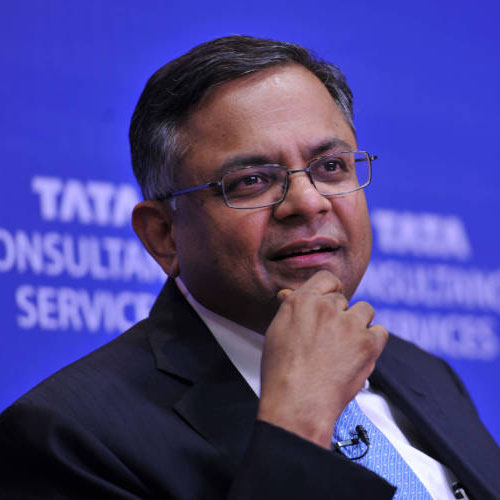-

This moment is akin to walking on a bridge. But it is a special bridge because we are not simply walking to see what is on the other side. Instead we have a hand in building our destiny
N. Chandrasekaran, chairman, Tata Sons
After IL&FS going belly up, some others also went under. Companies which were overleveraged and could not meet their commitments, had a torrid time. DHLF made history by being the first NBFC to be referred to the Insolvency & Banking Code in November 2019. The RBI also took action, albeit belated, against Yes Bank. After disallowing an extension to Rana Kapoor in 2018, administrators were brought in, in November 2019. PMB Bank was another small bank (with 137 branches) which came to grief.
The government took the decision of consolidating some of its smaller nationalised banks with relatively larger banks – 10 banks became four. The adverse conditions saw many NBFCs going slow on expanding their loan books. Multiple downgrades were the order of the day.
While financial companies and banks do not figure in the overall list of Business India’s group of companies, liquidity did make an overall impact. The worst hit due to the problems in the finance sector was the real estate sector. Overhang of supplies in the system, especially in semi-luxury and luxury houses, saw a downturn in the industry after a long time. Consolidation happened with stronger developers buying over projects from developers who were not able to move ahead on the execution front.
Taking advantage of the crisis
In an overall scenario of gloom and doom there were several companies which continued with their growth initiatives. While the new projects climate was vitiated, companies went on a buying spree through the NCLT, besides independently pursuing mergers and acquisitions.
The Insolvency Act introduced earlier also saw change in ownership of several of the large companies. Essar Steel, which had earlier sold off its oil business to Rosneft in 2017, saw its steel company being taken over by a joint venture led by Arcelor Mittal, for Rs42,000 crore. Aditya Birla Group company UltraTech continued with its initiative of asset accumulation and merged Century Textiles, cement division, through an arrangement scheme. Adani Group continued on its asset buying spree. In 2019 it acquired Krishnapatnam Port (though the transaction was completed in FY21). Adani Ports and SEZ also acquired 40 per cent in Snowman Logistics during FY20. Reliance Industry added around 12 start-ups during FY2019-20, to boost the total tally to more than 20.
As was noticed in earlier crises, the motto of several leading Indian corporates was ‘Why waste a good crisis?’ Most companies continued to look at growth opportunities, besides setting their house in order. Their main aim was to continue to utilise the surplus cash on the balance sheet to take over good assets even if it meant taking some additional debts. Cash remained king.
-

To help us achieve the next orbit of growth we have renewed our focus on digital technology offerings, building a green technology portfolio and developing public-facing platforms
S.N. Subrahmanyan, CEO & MD, L&T
While, on the one hand, companies strived to remain solvent by selling their non-core assets, on the other, companies with huge surpluses pursued their growth path aggressively. Mukesh Ambani is one of the biggest risk-takers, and his bid to transform his energy business into consumer facing businesses like telecom and retail started yielding results. In FY20 Reliance Industries reported an EBIDTA of Rs1 lakh crore, the highest by any company till now. No wonder it was rated as number one in the ranking of Business India’s Super 100 heroes.
Business India’s Super 100 heroes continued to stand out amongst the crowd. There was not much change in the top 10. Four PSUs, as usual, found their place in the creamy layer. ONGC, despite a sharp fall in PAT, retained its position in the top three. As did NTPC, which continued to power on, despite the tepid economy. With NFA still being considered in our computation of Super 100, the IT giants, TCS, Infosys, HCL and Wipro were ranked lower. This is also one of the reasons for HUL being pushed down. Larsen & Toubro, the company which has built a significant portion of the assets of several companies, has being ranked in the top 5.
With Covid striking in the last quarter, 2019-20, may well get eclipsed by the problems faced in 2020-21. Companies have taken various initiatives to combat the problems of the period. Says S.N. Subrahmanyan, CEO & MD, L&T: “At L&T, we have taken a decision to speedily proceed on the strategic path set out for the non-core businesses of L&T. To help us achieve the next orbit of growth we have renewed our focus on digital technology offerings, building a green technology portfolio and developing public-facing platforms that are helping us achieve a growth-oriented, sustainable and environmentally committed company. Business as usual will not be nearly enough: the game has changed too much. But by reimagining how we recover, operate, organise, and use technology, companies can set the foundations for enduring success in the engineering, construction, infrastructure, manufacturing and technology spaces.”
Different stalwarts have given advice on how to tackle the problems in the wake on Covid-19. Uday Kotak, the richest banker in the world and the president of CII, in an interview with Business India said that it was better for companies to shore up their cash requirements and take to the capital markets. “Markets offer significant opportunities for business and industries to raise risk capital. Many people are asking who is right, what the economy is saying or what the markets are saying. I am saying, I am not concerned. If markets are giving me risk capital, is it better to take risk capital rather than depend on the government? Markets are weighing the risk. Take capital and become future-ready.”
-

If markets are giving me risk capital, is it better to take risk capital rather than depend on the government? Markets are weighing the risk. Take capital and become future-ready
Uday Kotak, Banker and President, CII
Of course, besides cash, companies should take other steps too. Says Vipin Sondhi, MD & CEO, Ashok Leyland Ltd: “We will continue to be nimble and get ready for the future. We expect digital technologies to take a more central role in our business. Our digital journey, which is already well underway, will gain further momentum as the market moves towards solution-oriented offerings.”
The current year may not be any different from the earlier one as the Covid pandemic has led to a complete washout for the first quarter. Many businesses have already started readjusting themselves to the new normal. Work from home has become the new norm. While recovery is underway, it is bound to be much slower than anticipated. Companies which are in a position to reinvent themselves will continue to stand out. Old models may have to be jettisoned, along with traditional ideas on how to do business. The nimble ones who are able to adjust to the new normal, will succeed in the new world of the brave.
This is aptly captured by N. Chandrasekaran, chairman, Tata Sons, in a letter to his employees: “… buried in the stress and trauma of Covid-19 are opportunities for renewal. This moment is akin to walking on a bridge. But it is a special bridge because we are not simply walking to see what is on the other side. Instead we have a hand in building our destiny.”
Of course, hope and optimism are leading the way. This is reflected in the sharp recovery in the stock markets, with global liquidity giving a big hand. Before Covid-19, Sensex had posted 17 per cent growth by March 31, 2020. Nifty 50 was up by 14.5 per cent. By December, both Sensex and Nifty, which have the expectations of investors built in the prices of their constituent shares, are already trading at their all-time record high. Even if 30 per cent of these expectations translate into reality, Corporate India will be on a much sounder footing than it was in April 2020.





































